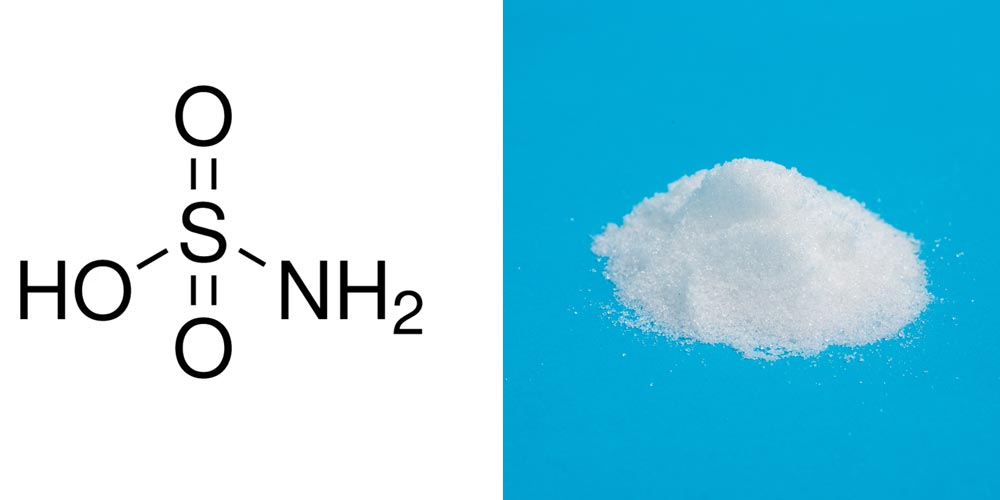Sulfamic acid, also known as aminosulfate, has risen as a versatile and multi-purpose cleaning agent across numerous industries, owed to its stable white crystalline form and remarkable properties. Whether utilized in household settings or industrial applications, sulfamic acid garners widespread acclaim for its exceptional descaling capabilities and safety features.
Functioning as an acidic cleaner, sulfamic acid leverages its non-hygroscopic nature and stability to deliver enduring and efficient cleaning outcomes across diverse scenarios. Notably, its reduced corrosiveness towards metals compared to strong acids like hydrochloric acid positions it as an optimal choice for descaling industrial equipment. From the intricate components of cooling towers to the robust structures of boilers, coils, and condensers, sulfamic acid effectively tackles scale and mineral deposits, thereby elevating equipment operational efficiency and overall productivity.
Beyond its primary role in descaling, sulfamic acid boasts a myriad of additional applications, showcasing its versatility and utility across various industries. As a catalyst in the esterification process, sulfamic acid facilitates the synthesis of essential compounds, contributing to the manufacture of dyes and pigments that enrich our surroundings with vibrant colors. Moreover, its presence in herbicides and denture tablets underscores its diverse applicability and importance in everyday products.
In the domestic sphere, sulfamic acid is gradually supplanting hydrochloric acid as the preferred choice for cleaning and descaling purposes. Its low toxicity, minimal volatility, and exceptional descaling performance resonate with a majority of users seeking safe and effective cleaning solutions for household maintenance.
The versatility of sulfamic acid extends further into industrial realms, where its efficacy is harnessed across various sectors to address specific challenges and enhance operational processes. In the paper and pulp industry, sulfamic acid serves as a pivotal inhibitor of pulp degradation, safeguarding paper strength during high-temperature bleaching procedures. Similarly, in the dye and pigment sector, sulfamic acid aids in the removal of excess nitrogen compounds utilized in diazotization reactions, ensuring optimal product quality and process efficiency.
In summation, sulfamic acid emerges as not just a cleaning agent but a cornerstone solution driving excellence and sustainability across diverse industries. Its potent descaling capabilities, coupled with its wide-ranging applications, position it as a catalyst for future developments in cleaning technologies and industrial processes. As industries increasingly prioritize safety, effectiveness, and environmental consciousness, sulfamic acid is poised to play an ever-expanding role, fostering cleaner, safer environments and contributing to operational excellence across sectors. In light of these factors, careful consideration and implementation of sulfamic acid in various applications are paramount for unlocking its full potential while ensuring sustainable and responsible practices in industry.
Post time: Jun-12-2024

